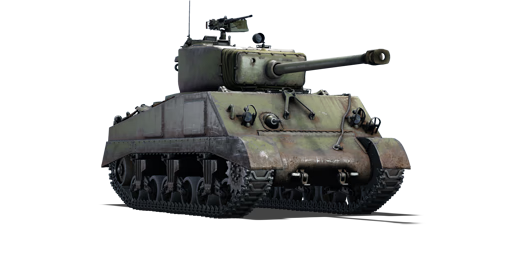The Soviet Union received 4,102 Medium Tank M4 (Sherman) as part of the lend-lease program. Of these, 2,007 had been fitted with the original 75 mm M3 tank guns (M4A2), while the remaining 2,095 were outfitted with the more capable 76 mm M1 tank guns (M4A2 (76) W). The total quantity of lend-lease Sherman tanks shipped to the USSR constituted 18.6% of all lend-lease M4 Sherman tanks. In the late summer of 1944, the first M4A2 (76) W arrived in the USSR. The Red Army believed that the M4A2 (76) W was less likely than the T-34s to catch fire from an ammunition detonation, although the M4A2 (76) W has a higher center of gravity than the T-34s, making it more susceptible to rolling over on uneven terrain. Some Red Army tank regiments were completely equipped with M4A2 (76) Ws by 1945. Among these units were the 1st Guards Mechanized Corps, the 3rd Guards Mechanized Corps, and the 9th Guards Mechanized Corps. Many Soviet tank crews evaluated and regarded the M4A2 (76) W highly, citing its dependability, ease of maintenance, and overall better firepower. However, flaws were also identified, the most serious of which was its high profile, which made it vulnerable to hostile fire. The M4A2 (76) W Sherman's narrow tracks also struggled to handle muddy terrain as compared to the T-34s' broader tracks.
Introduced in Update 1.45 "Steel Generals", the premium Soviet M4A2 (76) W offers unique gameplay experiences for the Soviet Army ground forces. Being one of the few foreign tanks in service within the Soviet Army, it allows for hull-down fighting positions due to substantially superior gun depression angles than standard Soviet tanks. Due to its high profile, the M4A2 (76) W is difficult to drive about undetected, making it an easy target for adversaries. However, by utilizing its excellent mobility early in the conflict, it is feasible to get into strategic positions and adopt a hull-down position in order to get the first shot at the enemy.











 2 x (95 / 150 / 175) %
2 x (95 / 150 / 175) % 
 2 x 160 %
2 x 160 % 
